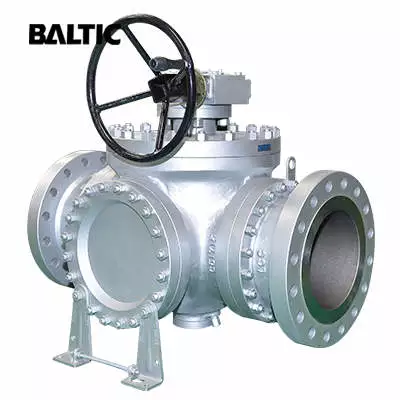Installation Instructions of Valves (Part Two)
Installation of valves
Valves must be installed carefully, and avoid hitting valves which are made of brittle materials. Check specifications and models of the valve, and check whether or not the valve is damaged, especially the valve stem before installing the valve. Rotate the valve to know whether the valve is tilted or not, because the valve stem is easily hit and tilted in the transportation. And remove debris inside the valve.
When the valve is lifted, do not tie the hand wheel or valve stem so as to prevent damaging the parts of the valve. Tie the flange instead. Pipes which are connected to valves must be cleaned before valves are installed. Compressed air can be used to blow oxidized iron dust, mud and sand, welding slag and other debris. The debris can easily scratch the sealing surface of the valve, and debris with big particles can block the valve with small sizes, making the valve not work. When a valve with a thread is installed, the PTFE seal tape should be wrapped on the thread of the pipe. Don't let the PTFE seal tape get into the valve in order to avoid debris in the valve, affecting the flow of the medium.
Symmetrically and evenly tighten the bolt when a flange valve is installed. Flanges of valves must be parallel with flanges of pipes, and the gap between the two flanges should be reasonable in order to prevent excessive pressure or even cracking of the valve. Special attention should be paid to valves with brittle materials or low strength. Spot weld the valve which must be welded to the pipe; open the closure member and then fully weld the valve.
Protection of valves
There should be external protection for some valves, that is heat preservation and cold insulation. Hot steam pipelines with heat insulation need to be added to the insulating layer sometimes. Whether or not a valve should have heat preservation or cold insulation, it all depends on production requirements.
In principle, when the temperature of the medium is low in a valve, the production efficiency will be influenced or a valve will be damaged. In this case, heat preservation is needed. When a valve is exposed, it is not good for production or frost will happen on the valve. When this occurs, cold insulation is needed. Heat preservation materials are asbestos, slag wool, glass wool, perlite, diatomite, vermiculite, etc. And cold insulation materials are cork, perlite, plastic, etc.
Valves must be installed carefully, and avoid hitting valves which are made of brittle materials. Check specifications and models of the valve, and check whether or not the valve is damaged, especially the valve stem before installing the valve. Rotate the valve to know whether the valve is tilted or not, because the valve stem is easily hit and tilted in the transportation. And remove debris inside the valve.
When the valve is lifted, do not tie the hand wheel or valve stem so as to prevent damaging the parts of the valve. Tie the flange instead. Pipes which are connected to valves must be cleaned before valves are installed. Compressed air can be used to blow oxidized iron dust, mud and sand, welding slag and other debris. The debris can easily scratch the sealing surface of the valve, and debris with big particles can block the valve with small sizes, making the valve not work. When a valve with a thread is installed, the PTFE seal tape should be wrapped on the thread of the pipe. Don't let the PTFE seal tape get into the valve in order to avoid debris in the valve, affecting the flow of the medium.
Symmetrically and evenly tighten the bolt when a flange valve is installed. Flanges of valves must be parallel with flanges of pipes, and the gap between the two flanges should be reasonable in order to prevent excessive pressure or even cracking of the valve. Special attention should be paid to valves with brittle materials or low strength. Spot weld the valve which must be welded to the pipe; open the closure member and then fully weld the valve.
Protection of valves
There should be external protection for some valves, that is heat preservation and cold insulation. Hot steam pipelines with heat insulation need to be added to the insulating layer sometimes. Whether or not a valve should have heat preservation or cold insulation, it all depends on production requirements.
In principle, when the temperature of the medium is low in a valve, the production efficiency will be influenced or a valve will be damaged. In this case, heat preservation is needed. When a valve is exposed, it is not good for production or frost will happen on the valve. When this occurs, cold insulation is needed. Heat preservation materials are asbestos, slag wool, glass wool, perlite, diatomite, vermiculite, etc. And cold insulation materials are cork, perlite, plastic, etc.





